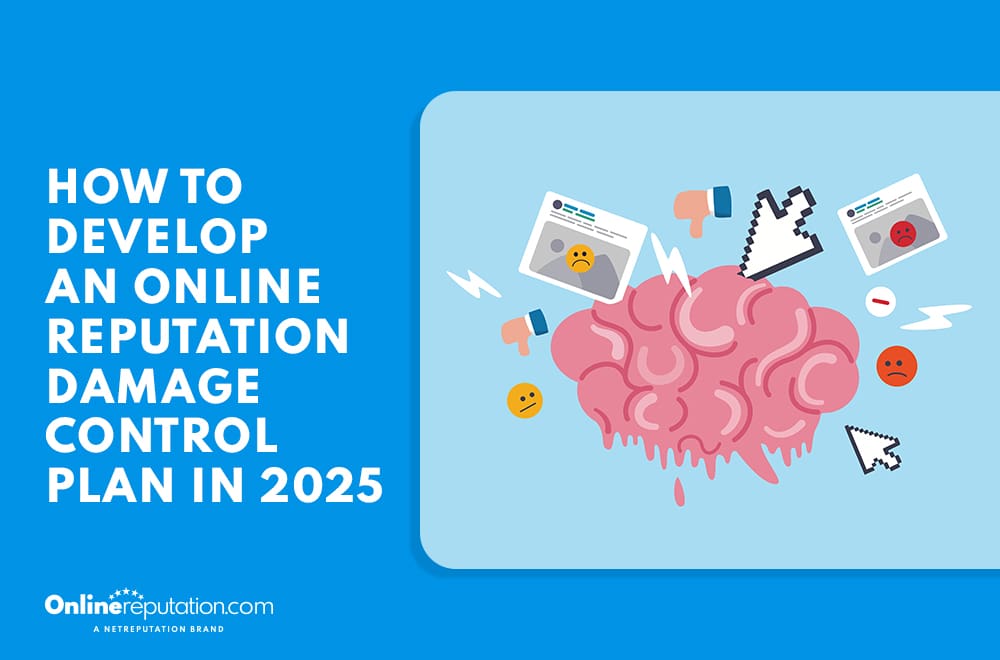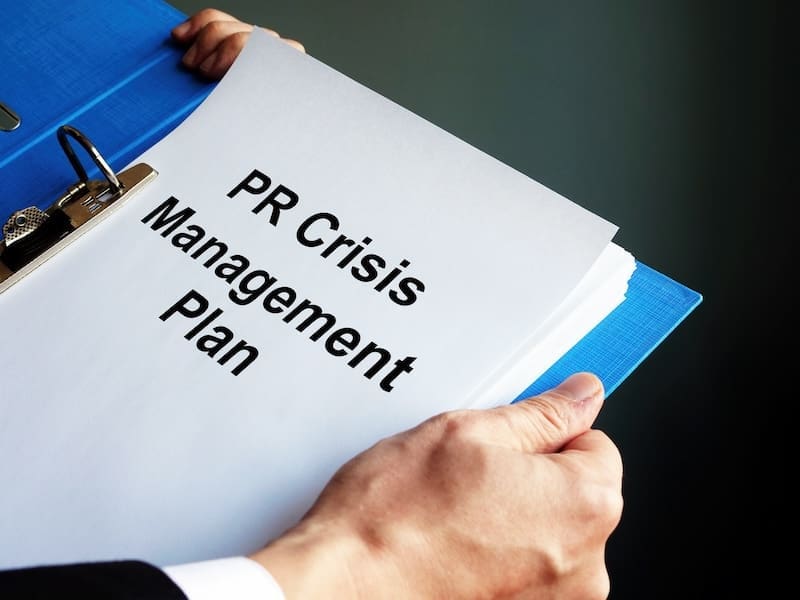
This article discusses what you need in a reputation damage control plan to protect your personal or business presence in 2026.
Sometimes, even when we’re very careful, we still make mistakes.
When that happens, your brand can be severely damaged if you don’t have a plan in place for damage control. If you truly want to ensure that problems don’t have a lasting effect on your business, you need to develop a reputation damage control plan that all employees follow.
But what should your reputation damage control plan look like? And how can you best put these practices in place starting today, even if your employees aren’t used to following a set plan?
Read on to find out what you need to know about developing a crisis management plan that takes various risk factors into account.
It’s possible to create a robust, positive online reputation even if you’re starting from zero or rebounding from a PR crisis. Call us at 844-230-3803 for more information.
What Types of Crises Should a Brand Reputation Damage Control Plan Cover?
In order to protect your business’s reputation from an assortment of potential risks, your damage control plan should cover a wide variety of future reputational risks. These typically fall into a few broad categories:
- Scandals: This is when someone in your company is caught performing an illegal act. For example, your accountant embezzles money.
- Mistakes: Honest mistakes don’t include illegal activity. However, they can still be highly damaging to a company’s reputation. For example, an employee may accidentally post sensitive material to the company’s social media account instead of their personal, private account.
- Poor Reviews: Every company is bound to get poor reviews at some point. However, a solid reputation management plan includes review monitoring and management. You should be responding to all of your business reviews, both positive and negative. This allows you to offer great customer service, prevent problems from snowballing, and improve customer loyalty.
- Complaints: If a customer reaches out to complain directly to a company via email, social media, phone, etc., it is more active than a negative review and falls into its own category.
- Product or Service Issue: If you have a massive recall (i.e., something was wrong with your product for more than a few customers), it falls under this category.
Any effective risk management plan needs to address each of these potential problems.
Today, online reputation management is more important than ever before. Get started with a free analysis here or explore our services offered through our parent company, NetReputation.
Your Reputation Management and PR Crisis Plan Should Answer These Questions
Every business has its own way of approaching reputational risk and developing a plan to protect the company’s reputation. For the sake of managing reputational risk, your plan may be laid out in a 100-page document or it may be covered in a few simple paragraphs.
The complexity of your reputational risk plan will depend on the size and nature of your business. However, no matter how vast or brief your plan is, it should answer the following questions:
- Who should a PR crisis be reported to? How should it be reported?
- When a reputational risk occurs, who should communicate to customers or clients?
- How quickly should the company respond to customer questions?
- What are the answers we’ll give to commonly reported problems like data breaches?
- What message will our company deliver if we’re not able to solve the problem immediately?
- In order to avoid negative media coverage, what procedure should be followed if the press asks for a statement?
- When does a lawyer need to be consulted before a reply is given?
We work with clients to help them build their online reputation and take control of their digital presence. Give us a call at 844-230-3803 to learn more.
Customer Support Scripts vs. Natural Responses
A common piece of advice that small and medium-sized businesses receive about reputation management is to use customer service scripts, especially in important and dire situations. However, this can be a bad idea if responses come off as unnatural and inauthentic.
Yes, if you have a large business or corporation, using scripts at times is inevitable. This may be the only way to ensure your country-wide or global customer support team consistently delivers the same level of service.
However, in the face of a crisis — or if you have a small business and can provide customized support all the time — it’s best to veer away from scripts and have a more honest and genuine response. This is the best way to get customers and the public to trust your brand.
Instead of always relying on scripts, hire upper-level customer support agents or reputation management team members who you trust and who can use their communication skills when dealing with customers. Empower them with the freedom to answer complaints and deal with negative reviews in authentic ways.
Instead of telling them what to say, give them guidelines that address the following:
- The brand messages you always want to express.
- Elements to include in every message, like apologizing and taking accountability for whatever issue the person is experiencing.
- The perks and solutions they’re allowed to offer, like discounts, free products and refunds.
Also, arm employees with examples of good and bad responses. Then, give them the freedom to deal with issues on their own. They can start by handling smaller complaints and work up to resolving major problems.
Professional Help to Create a Strong Online Presence
By combining a well-written crisis response plan with a trustworthy team of employees who will implement it, you can maintain control of your brand reputation even in a worst-case scenario.
At OnlineReputation.com, we provide must-know information to individuals and businesses who want to create, grow or repair their digital reputation. Whether you’re prioritizing your personal or professional online reputation, our advice and team of experts can help.
Through our parent company, NetReputation, we offer a range of online reputation management services, including ad management, search engine optimization, review monitoring, content removal and more. Our five-step ORM strategy ensures we cover every base to create a tailored program that’s right for you.
Get in touch with us today at 844-230-3803 to discuss your plan for preventing and dealing with reputational risks.
Last updated 12/2025
You might also like
How To Remove Arrest Records From the Internet in 2026
This article discusses what you need in a reputation damage control plan to protect your personal or business presence in …





